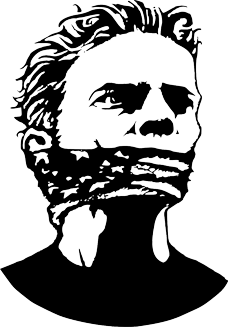2017-02-27 10:14:33 | |
Roberto Assagioli (1888-1974) whose birth anniversary we mark on 27 February was an Italian psychotherapist, father of an approach called “Psychosynthesis”, a younger collaborator of C.G. Jung and S. Freud before the break in approach between Jung and Freud. Although Assagioli is closer in spirit to the work of Jung, Assagioli is often considered as the person who introduced the thinking of Freud to Italians.
However, if one knows something about the founding and early period of the Theosophic Society founded by Helena Blavatsky (1831 – 1891) and the important place that teaching about the role of chakras played in the early days of the Society, one can easily see how the mother of Roberto Assagioli passed on to her son the chakra teachings which form the structure of psychosynthesis. One can also see why, if one wants to be taken seriously within the scientific milieu, one would not stress the chakras and kundalini as the heart of one's approach. To start with, it is not clear if the chakras are within the physical body or are energy centers outside the body but closely related – an energy body separate but very close to the physical body. Each of the chakras is a power center involved with the experience and expression of the energy particular to its individual function. Each energy center is moving at different speeds, and can be symbolized as a wheel – the meaning of chakra in Hinduism. The chakras are totally interconnected but each is partially closed or open. When a chakra is fully open, it gives power of perception and creativity. The seven major chakras are located at the base of the spine, at the genitals, the solar plexus, the heart, throat, middle of the forehead (the third eye) and at the top of the head (the crown) which when open is an avenue for cosmic energy. At the base of the spine is said to be a fire-like energy, the kundalini, which, with practice, can flow upward to open and balance the other chakras, making for a harmonious synthesis. The techniques for the upward flow of the kundalini are the use of the power of the will, the use of visualization, and the techniques of controlled breathing – all techniques which Assagioli uses in psychosynthesis – His best known book being The Act of Will. These techniques are not to be used mechanically but with care and attention. With practice, experience, intelligence and intuition, much progress can be made. For Assagioli, each chakra is the location of a “subpersonality”. The subpersonality may be so strong as to fix the kundalini, preventing it from continuing its course to open all seven chakras harmoniously. Thus, one of the first steps in psychosynthesis is to “dis-identify” with a particular subpersonality. To give two common examples: the kundalini may remain fixed in the genitals giving an over-emphasis to sexual pleasure which can then go from pleasure in a sexual mode to a total identification with one's sexual orientation and to a constant craving. Likewise, if the kundalini is blocked in the solar plexus, home of emotions, the emotional aspect of life can become overdeveloped and lead to imbalance rather than harmony. Assagioli remains outside the major psychoanalytic schools – Jungian or Freudian but is better known in New Age circles and in trans-personal psychotherapy – a thinker well worth knowing. Note 1) Jean Hardy. A Psychology with a Soul (London: Routledge & Kegan Paul, 1987, 245pp.) ***************************** Rene Wadlow, President, Association of World Citizens. Copyright mediaforfreedom.com | |
Find us on Facebook
Find us on Twitter


 Assagioli was born into an intellectual Jewish family in Venice, a family which was very interested in the thinking of India. Assagioli's mother was an early member of the Theosophical Society, interested in Hindu and Buddhist approaches to the development of the person. Roberto Assagioli continued this interest, but did not mention it in his writings. As Jean Hardy notes in the analysis of Assagioli's work A Psychology with a Soul (1) “He explicitly kept these mystical interests separate from psychosyntheis, but clearly his wide knowledge of many centuries of spiritual thought is relevant to the theory and practice eventually developed in psychosynthesis - though this is rarely acknowledged in his therapeutic writing. This split has made the job of tracing the influences on psychosynthesis quite difficult, and sometimes speculative...Like Freud, and indeed most psychiatrists today, he was determined that his work should pass muster and be accepted as a respectable scientific theory. In the twentieth century, a scientific study of the unconscious has just begun. But psychosynthesis, like psychoanalysis, was developed outside the universities, in a 'school'; it is still not widely accepted or known by academics.”
Assagioli was born into an intellectual Jewish family in Venice, a family which was very interested in the thinking of India. Assagioli's mother was an early member of the Theosophical Society, interested in Hindu and Buddhist approaches to the development of the person. Roberto Assagioli continued this interest, but did not mention it in his writings. As Jean Hardy notes in the analysis of Assagioli's work A Psychology with a Soul (1) “He explicitly kept these mystical interests separate from psychosyntheis, but clearly his wide knowledge of many centuries of spiritual thought is relevant to the theory and practice eventually developed in psychosynthesis - though this is rarely acknowledged in his therapeutic writing. This split has made the job of tracing the influences on psychosynthesis quite difficult, and sometimes speculative...Like Freud, and indeed most psychiatrists today, he was determined that his work should pass muster and be accepted as a respectable scientific theory. In the twentieth century, a scientific study of the unconscious has just begun. But psychosynthesis, like psychoanalysis, was developed outside the universities, in a 'school'; it is still not widely accepted or known by academics.”